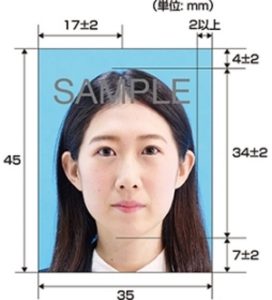Secure and precise personal identification is essential for the continuation of socioeconomic activities during a pandemic. In Japan, the main region of focus for this research, this became even clearer between 2020 and 2021 when multiple cases of online fraud involving identity theft took place, including a series of document forgery to receive a financial relief package and taking online job tests for someone else. When the next pandemic and the next lockdown come in the future, our society needs to be better prepared to face this challenge of continuing life under severely restricted in-person communication.
While there are various means of identification in our society today, such as fingerprints, PINs and passwords, identification by means of a photo ID is one of the most commonly used methods. Even with the emergence of new technologies such as facial recognition, ID card with portrait photographs still play an important role as they have already achieved a wide social acceptance and they are relatively cheap to produce or obtain. This trend is unlikely to change when a next pandemic compels us to replace face to face contacts with online interactions. Learning how portrait photographs have functioned in the context of personal identification, therefore, has policy relevance in our contemporary world in addition to being an intriguing subject of study in the field of visual history.
In order to gain historical insight into this issue, this study conducts a historical analysis of the policy debates and public discourses over the spread of personal identification technologies through a case study of ID photographs in 20th century Japan (see photograph 1).
[...]

 “Migration hat bislang historisch unter allen Umständen Grenzen überwunden und wird es auch weiterhin tun.” Einen besseren Einstieg in eine Blogparade zu Flüchtlingen, Migration und Interkultur in den Geisteswissenschaften kann man sich nicht wünschen. Gesagt hat diesen Satz Dr. Manuela Bojadžijev vom Institut für Europäische Ethnologie der HU Berlin in einem der wenigen öffentlichen Beiträge von Seiten der historischen Sozial- und Geisteswissenschaften zum Thema. Sätze wie dieser können populistische, hetzerische und menschenunwürdige Meinungen nicht ändern und fehlgeleitete Diskussionen nicht verhindern. Aber sie können ihnen vielleicht eine Facette hinzufügen, die auf wissenschaftlichen Daten, Untersuchungen oder Vergleichen beruht und der medialen Darstellung mehr Trennschärfe gibt. Dazu möchte ich in meiner ersten Blogparade #refhum aufrufen – und auch dazu, den Austausch zum Thema unter den Wissenschaftsbloggern der verschiedenen Disziplinen anzuregen.
“Migration hat bislang historisch unter allen Umständen Grenzen überwunden und wird es auch weiterhin tun.” Einen besseren Einstieg in eine Blogparade zu Flüchtlingen, Migration und Interkultur in den Geisteswissenschaften kann man sich nicht wünschen. Gesagt hat diesen Satz Dr. Manuela Bojadžijev vom Institut für Europäische Ethnologie der HU Berlin in einem der wenigen öffentlichen Beiträge von Seiten der historischen Sozial- und Geisteswissenschaften zum Thema. Sätze wie dieser können populistische, hetzerische und menschenunwürdige Meinungen nicht ändern und fehlgeleitete Diskussionen nicht verhindern. Aber sie können ihnen vielleicht eine Facette hinzufügen, die auf wissenschaftlichen Daten, Untersuchungen oder Vergleichen beruht und der medialen Darstellung mehr Trennschärfe gibt. Dazu möchte ich in meiner ersten Blogparade #refhum aufrufen – und auch dazu, den Austausch zum Thema unter den Wissenschaftsbloggern der verschiedenen Disziplinen anzuregen.